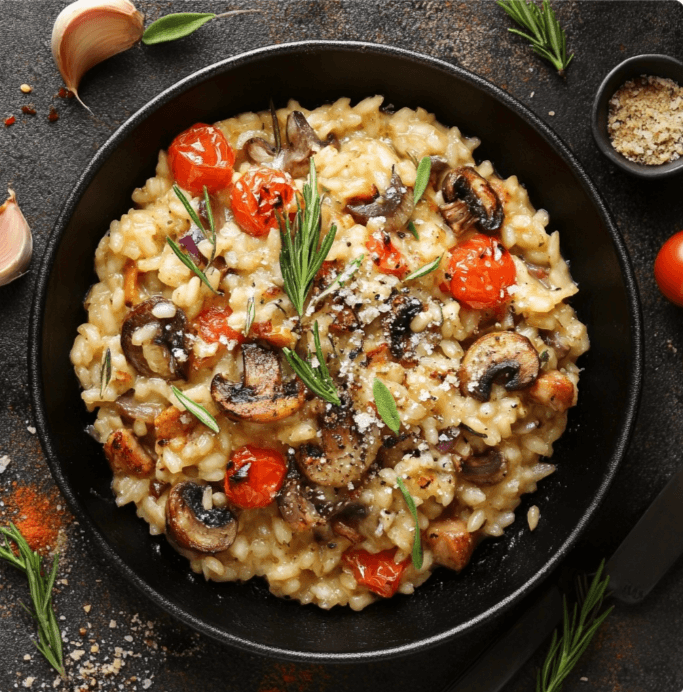Is Risotto Italian or French?
Ever found yourself pondering over this culinary conundrum while savoring a creamy, comforting bowl of risotto? 🍚 If so, you’re not alone! The question “Is Risotto Italian or French?” has intrigued food lovers and historians alike. Today, we’re setting the record straight and taking you on a flavorful journey through the rich history and intricate preparation of risotto. Spoiler alert: the origins of this dish might surprise you!
Table of Contents
What is Risotto?
Risotto is a northern Italian rice dish cooked with broth until it reaches a creamy consistency. The rice used is not just any rice—it’s a high-starch variety like Arborio, which gets all creamy and delicious when cooked right. Imagine it soaking up all the flavors like a sponge, giving you that perfect bite every time.
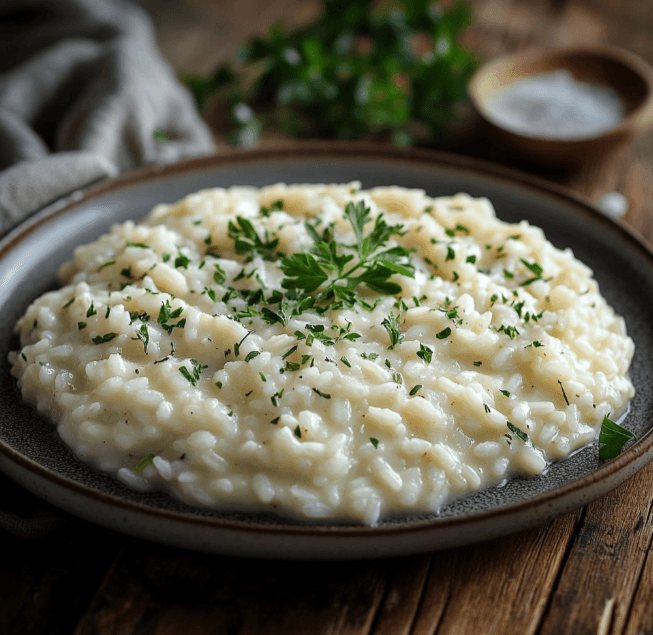
Common Misconceptions About Risotto’s Origins
You might think, “Hey, isn’t risotto French? It’s so gourmet!” Well, it’s a common slip-up. The confusion probably comes from the French’s famous love for luxurious and meticulously cooked meals. But trust me, risotto has its heart and soul in Italy—specifically, the northern regions like Lombardy and Piedmont.
The Historical Roots of Risotto
The Italian Heritage of Risotto
Risotto began its journey in the north of Italy, a place known for its exquisite rice paddies. Historical records suggest that rice was introduced to Italy during the Middle Ages, and it was the Italians who masterfully turned it into risotto as we know it today.
“Risotto is not just a dish; it’s a way Italians show their love for food and family.”
To dive deeper into the traditional techniques and varieties of this beloved Italian dish, check out our ultimate guide to authentic risotto
French Influence on Italian Cuisine
While the French didn’t invent risotto, their culinary techniques have influenced Italian cooking over the centuries. For example, the slow-cooking method that’s key to a creamy risotto reflects the French approach to coaxing flavors and textures out of simple ingredients.
Is Risotto Italian or French? In Popular Culture
Risotto’s fame extends beyond the kitchen. It’s frequently featured in film and television, often used to test the mettle of aspiring chefs in cooking shows. This dish’s complexity and the skill required to perfect it have made risotto a symbol of culinary excellence worldwide.
Risotto isn’t just a meal; it’s a cultural icon. It’s featured in films, books, and even TV shows where chefs battle it out to create the perfect creamy dish.
Risotto on the Silver Screen
From romantic dinners in movies to pivotal scenes in culinary competition shows, risotto is often shown as the ultimate test of a chef’s skill.
Famous Chefs and Their Signature Risotto Recipes
Chefs like Gordon Ramsay and Jamie Oliver have brought risotto into the spotlight, each adding their unique twist to this classic dish.
Key Ingredients and Preparation
Traditional Ingredients Used in Risotto
Here’s what you need for a basic risotto:
- Rice (Arborio or Carnaroli): The star of the show 🌟
- Broth (chicken, vegetable, or beef): This is what the rice absorbs.
- Butter and Onions: For starting the dish off right.
- White Wine: Adds a touch of acidity and depth.
- Parmesan Cheese: For that creamy, cheesy finish.
Step-by-Step Risotto Cooking Technique
Cooking risotto is like a dance—the steps need to be precise and well-timed:
- Sauté onions in butter: Until they’re translucent.
- Toast the rice: This helps it absorb the broth without getting mushy.
- Add wine and then broth gradually: Stir constantly until each addition is absorbed.
- Finish with Parmesan: Stir in for creaminess and season to taste.
Regional Variations of Risotto in Italy
Risotto may have its roots in Northern Italy, but it’s a dish that has traveled and transformed across various regions, each adding its unique spin. Let’s explore a couple of standout versions:
Risotto alla Milanese
Ah, Risotto alla Milanese – the golden jewel of Milan’s cuisine! This dish is famous for its luxurious saffron threads, which give the risotto a vibrant yellow color and a slightly earthy flavor. 🌼 It’s often served with osso buco, making it a festive dish in Milanese homes.
- Ingredients for Risotto alla Milanese:
- Arborio rice
- Beef broth
- Saffron
- Onions
- Butter
- Parmesan cheese
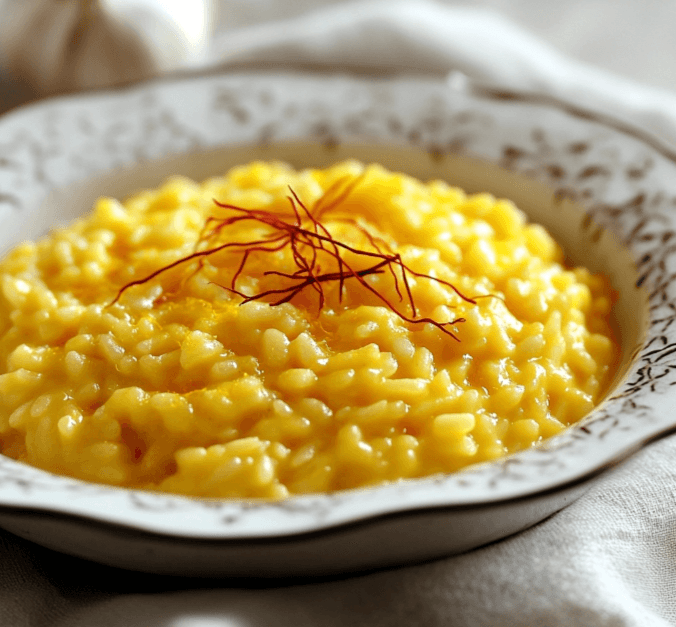
Seafood Risotto: A Coastal Delight
Heading over to the coast, Seafood Risotto showcases the fresh bounty of the sea. It’s typically loaded with shrimp, mussels, and clams, and often brightened with a splash of white wine. This version is a testament to the versatility of risotto, adapting to whatever local ingredients are at hand.
- Ingredients for Seafood Risotto:
- Arborio rice
- Fish or seafood broth
- Mixed seafood (shrimp, mussels, clams)
- Garlic
- Parsley
- White wine
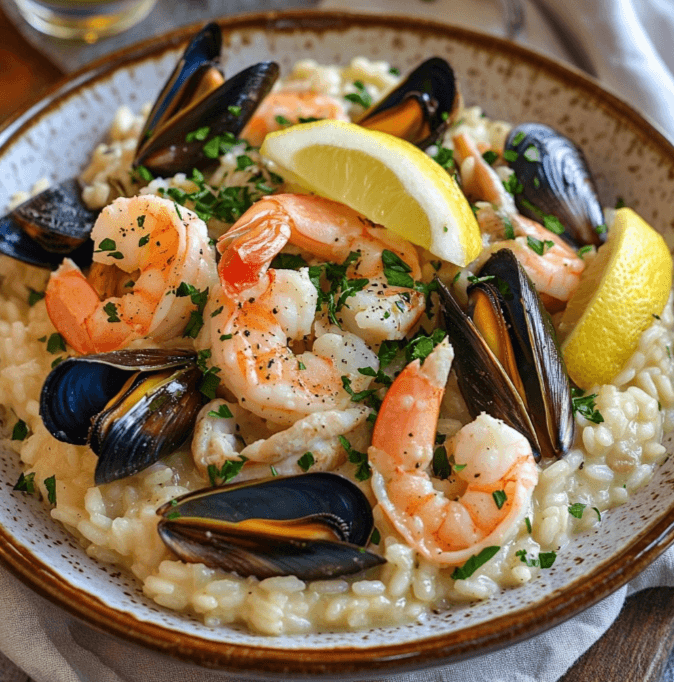
Common Problems When Cooking Risotto and Their Solutions
Risotto might seem daunting to cook, but once you know the common pitfalls, it’s not so tricky. Here’s how to navigate some typical risotto woes:
Achieving the Perfect Consistency
- The Challenge: Getting that signature creamy texture without making it mushy can be tough.
- The Fix: The secret lies in the stirring. Constant, gentle stirring helps release the rice’s starch, which gives risotto its creamy texture. Also, make sure your broth is warm when adding it to the rice; this helps maintain an even cooking temperature.
Solving Undercooked Rice Dilemma
- The Challenge: Sometimes, the rice is still hard in the middle, even if the outside looks done.
- The Fix: Patience is key! Make sure to cook your risotto on a low to medium simmer and add broth slowly. It’s a bit of a waiting game, but totally worth it. If the broth runs out and the rice isn’t done, just add hot water in small amounts until the rice is perfectly al dente.
Best Wines to Complement Different Types of Risotto
Choosing the right wine to accompany your risotto can elevate the dish from delicious to divine. Here are some suggestions:
- For Risotto alla Milanese: A full-bodied white like Chardonnay brings out the saffron’s subtle complexities.
- For Seafood Risotto: Opt for a light, crisp white like Pinot Grigio to complement the freshness of the seafood.
“A great wine pairing can turn a simple meal into a feast for the senses.”
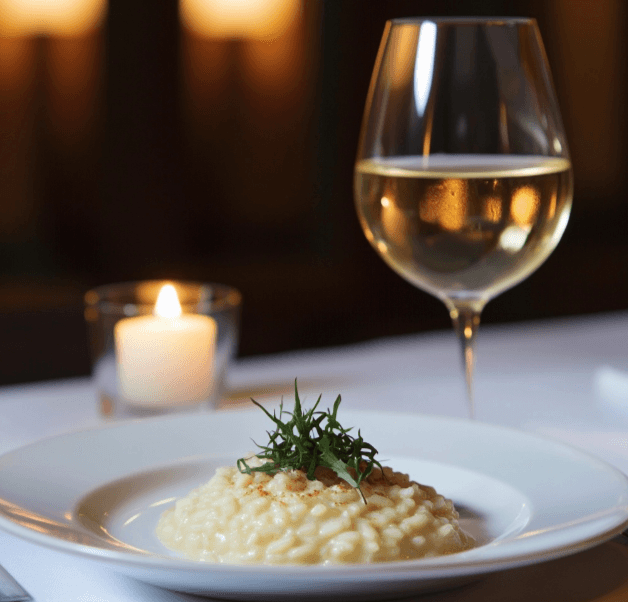
DIY Risotto at Home
Is Risotto Italian or French? No matter where you’re from, making risotto at home is an enjoyable way to bring Italian cuisine into your kitchen. Remember, practice makes perfect, and each batch of risotto is an opportunity to refine your technique.
Essential Tools and Tips for Beginners
- The Right Pot: Use a wide, thick-bottomed pan to ensure even heat distribution.
- Consistent Heat: Keep your stove on a medium-low setting to avoid burning the risotto.
- The Wooden Spoon Test: A classic trick to check if your risotto is ready is the “canal test.” Drag your wooden spoon through the risotto to make a canal; if the risotto slowly flows back to fill the space, it’s just right!
Ready to try your hand at another risotto recipe? Our wild mushroom risotto with Parmesan is a great next step to elevate your culinary skills
Creative Twists to Try in Your Next Risotto
Once you’ve mastered the basic risotto, it’s time to get creative. Here are some innovative ideas to spice up your next risotto adventure:
Add Some Color and Flavor
- Beetroot Risotto: For a vibrant, pink-hued dish that’s not only visually stunning but also packed with flavor.
- Lemon and Basil Risotto: Perfect for summer, adding a fresh and zesty twist to the creamy rice.
Go Global with Your Ingredients
- Curried Risotto: Incorporate curry spices and coconut milk for an Indian-inspired version.
- Sushi Risotto: Combine cooked sushi rice with traditional risotto ingredients and top with seared tuna or salmon for a Japanese-Italian fusion.
Conclusion: Recap of Risotto’s Cultural and Culinary Journey
As we wrap up our journey through the world of risotto, let’s reflect on what makes this dish so special. From its humble beginnings in Northern Italy to becoming a staple on global gourmet menus, risotto represents a fusion of tradition and innovation. It’s a dish that invites creativity and demands attention, making each spoonful a testament to the love and care that goes into its preparation.
For another Italian dish that welcomes creative twists, explore our butternut squash ravioli with brown butter sauce, perfect for inspiring your next kitchen adventure
The Joy of Cooking Risotto
Cooking risotto is more than just a culinary process; it’s a form of art that allows you to express yourself in the kitchen. Each ingredient you choose adds a unique note to the melody of flavors, and every stir brings you closer to mastering this beloved Italian classic.
“Risotto is not just food; it’s poetry on a plate.”
Engaging with Risotto Beyond the Plate
Whether you’re a home cook looking to impress your family or a food enthusiast exploring international cuisines, risotto offers a delightful challenge with delicious rewards. It’s a dish that keeps on giving, whether you’re experimenting with new flavors or perfecting your stirring technique.
Is Risotto Italian or French? Final Thoughts
In answering “Is Risotto Italian or French?”, we’ve traveled through the culinary landscapes of Italy and explored how this iconic dish is firmly rooted in Italian tradition. Whether you’re a seasoned chef or a home cook, making risotto offers a delightful way to celebrate Italian cuisine and its emphasis on simplicity, quality ingredients, and heartfelt cooking.
So, next time someone asks, “Is Risotto Italian or French?”, you’ll not only know the answer, but you’ll also have the skills and knowledge to share the rich story and delicious traditions of Italian risotto.
Thank you for joining me on this delicious dive into the world of risotto. I hope you’re inspired to pick up a pan and start stirring your way to a perfect risotto that captures the essence of Italy right in your kitchen. Remember, the best part about cooking is making each dish your own—so go ahead, get creative, and let your culinary spirit soar! 🍴✨
If you have any questions about risotto or need more tips on how to make your version unforgettable, just drop a comment below or check out our other guides. Happy cooking, and here’s to many scrumptious risotto meals ahead!

